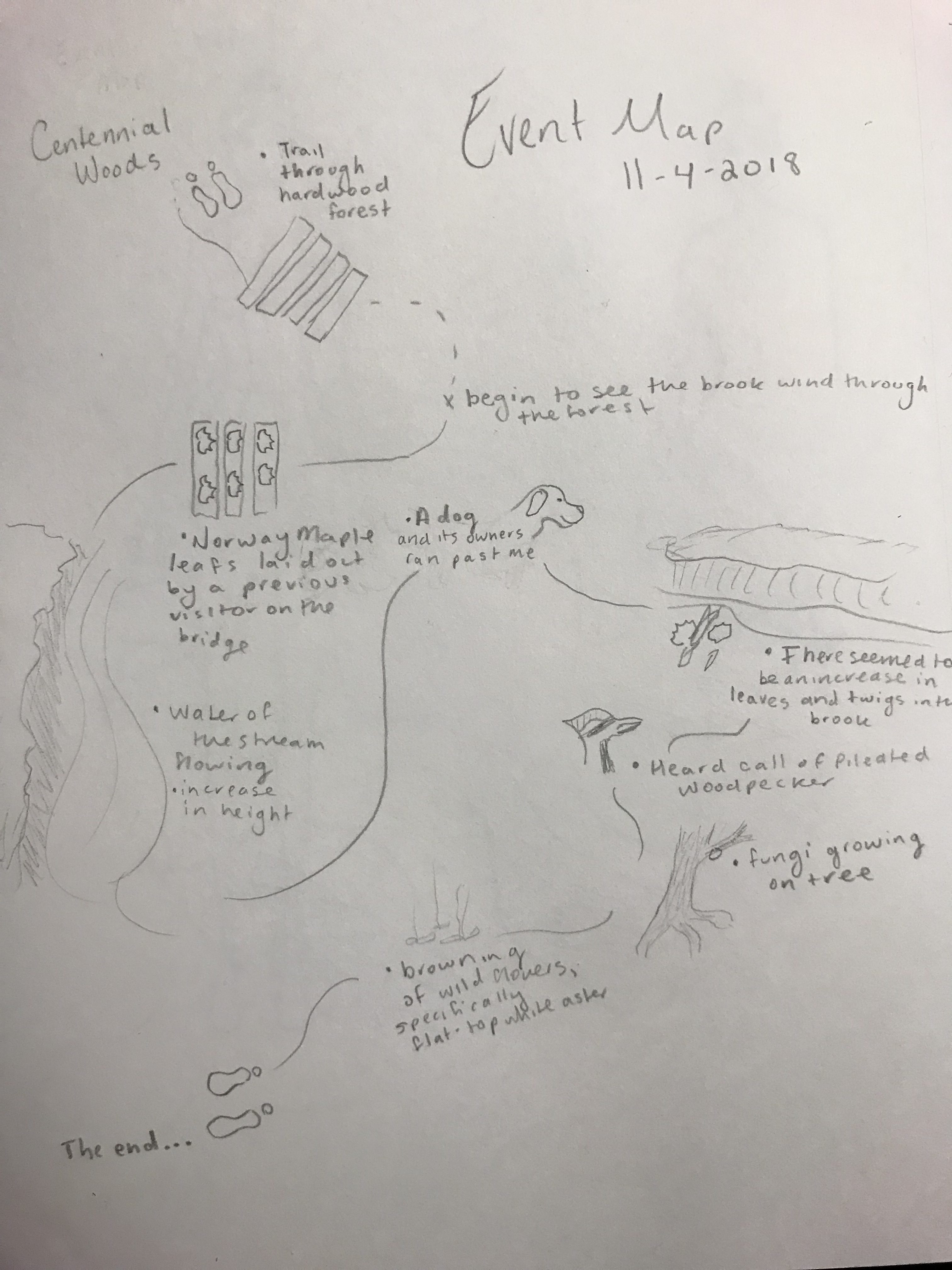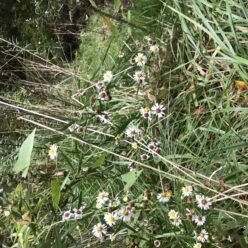As the cold air settled in, the plants that once blossomed are now decaying. The trees are beginning to grow fungi, the wildflowers that once bloomed are now turning brown. The leaves have left all of the trees, littering the floor of the forest with an array of red, yellow, and orange leaves. In the distance, the evergreens painted the backdrop of the brook with green, but the only thing left green around the area is grass. The mud is creeping onto the bank as well. While I was unable to see any animal prints in the mud this trip, I will be looking out for tracks in the future.
While visiting, I noticed that the storms this past week caused the stream to rise a couple feet and was flowing rapidly whereas in the previous visit it was almost still. I found it interesting that an increase in the amount of water greatly impacted the flow. While the water looked alive, the only life I saw was a squirrel in the distance and I heard the call of the pileated woodpecker once again. Despite small traces of animal presence, the fall foliage was on display. Someone had laid out Norway maple leaves across the bridge, which showcased the beautiful yellow color of the leaves in the fall. As for the iron-oxidizing bacteria I viewed last week, it is still there. I am interested to see if it will still be there next week.
Here is my event map:

